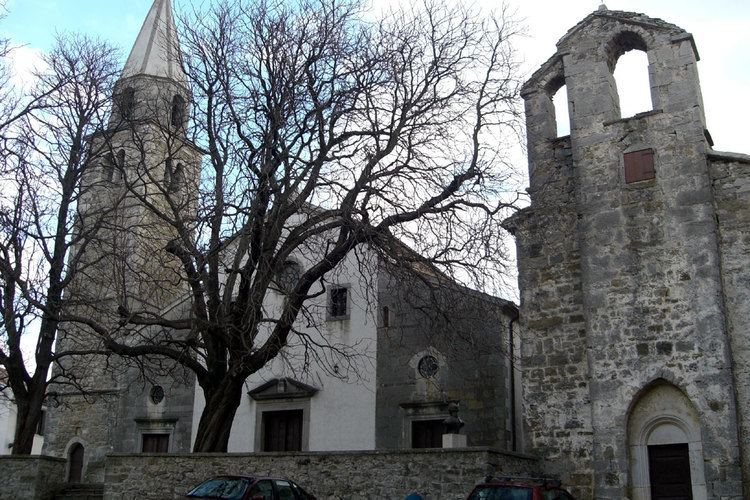Time zone CET (UTC+1) Local time Friday 1:56 AM Area code 052 | Postal code 52 425 Population 153 (2011) | |
 | ||
Weather 9°C, Wind NW at 2 km/h, 77% Humidity | ||
Roč (Italian: Rozzo, German: Rotz) is a village in Istria County, north-west Croatia. Administratively it belongs to the town of Buzet. Roč is considered a historic town rather than a village due to its rich cultural heritage.
Contents
Map of 52425, Ro%C4%8D, Croatia
Geography
It is situated in the northwest of the Istrian peninsula, southwest of the Ćićarija plateau. The village is located about 50 km (31 mi) south-east of Trieste on the road via Koper and the Učka Tunnel (B8) to Rijeka. Roč station is also a stop on the Istrian Railway (Istarske pruge) line from Divača via Podgorje to Pula.
History
The present-day settlement was first mentioned as Rus in a document of 1064. Like Roč or Rozzo, the names all derive from the Celtic Roz. The related name Roc is very common in wide areas under Celts influence. The area had been settled in protohistoric times. Romans called it Castrum Rotium or Rocium.
While the former March of Istria was gradually incorporated into the Venetian Stato da Màr, Roč from the 12th century onwards developed to a fortified town and a centre of Croatian literature. The local Church of St. Anthony holds the precious Roč Glagolitic Abecedarium from the 13th century. The first Croatian printed book, the 1483 Missale Romanum Glagolitice, was prepared in Roč by one Juri Žakan. By the 1797 Treaty of Campo Formio, Istria fell to the Habsburg Monarchy and later became part of the Austrian Littoral. After World War I and the dissolution of Austria-Hungary, Istria including Rozzo was partitioned to Italy in the Treaty of Rapallo (1920). After the end of World War II, Istria including Rozzo was ceded to Yugoslavia. After the breakup of Yugoslavia in 1991, most of Istria (including Roč) became part of present-day Republic of Croatia.
Sights
The town of Roč is declared by the authorities as an important cultural monument, as it has a well-preserved medieval town walls with two entrances, a Roman lapidarium, a Venetian bombarda cannon and a functional watchtower. Furthermore, it has the Romanesque church of St Anthony dating from the 11th century, the small St Roch Church with several notable 14th-century frescoes representing St Paul and the Apostles, as well as the St Bartholomew parish church built from the 14th century onward with its prominent 26 m (85 ft) high steeple erected in 1676. Numerous other smaller artifacts are preserved in the ancient buildings.
Seven kilometers from Roč is Hum, with a population of only 22 people often called the smallest town in the world. Along the road from Roč to Hum is Glagolitic Alley (Aleja glagoljaša), a scenic route of ten monuments from the history of the Glagolitic alphabet.
